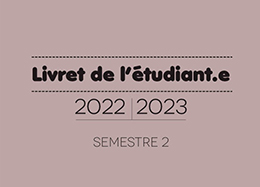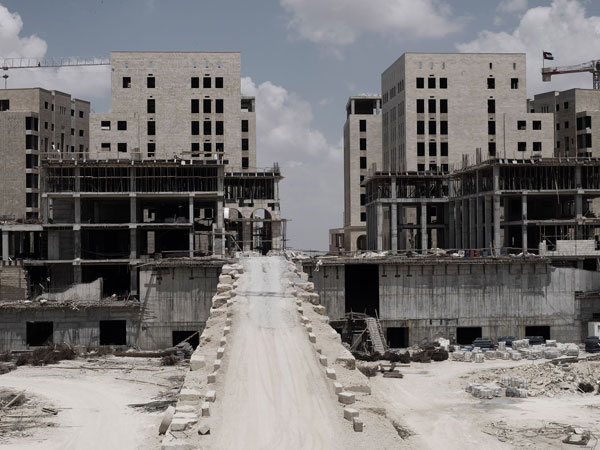en partenariat avec le Frac Centre-Val de Loire ( Biennale d'Architecture)
Land of dreams to dreamland: Dream of a state to a state of a dream
When addressing the architectural scene in Palestine a set of inquiries remain unanswered. Many scholars focus on the history and heritage of the Palestinian architecture; others focus on the future of Palestine and discuss concepts related to decolonizing the architecture. Rarely do we find studies that focus on the contemporary architectural scene in Palestine and how it may or may not be part of the international and Arab architectural professional scene. The research investigates the architecture and built environment in Palestine as a mean for understanding the global Arab world and the transformations it is currently undergoing.
Palestine had a somewhat different situation from the rest of the Arab world, as the country underwent a series of different colonial/occupations and hence, there was never a state of independence. The dream of a land/nation/state became the romantic state of a dream, which was never actualized therefore a “state of a dream” explains more the current conditions that renders the cultural and political scenes. Palestinians were never in full control of their land. The end of the Ottoman Empire marked the placement of Palestine under the British Mandate from1917 till 1948. In 1948 the Israeli Occupation State controlled part of the Palestinian land including West Jerusalem, the Jordanians controlled the West Bank and the Egyptians controlled Gaza Strip. In 1967, the Israelis completely controlled the Palestinian land till 1994. The year 1994 marked a turning point in the history of Palestine; the foundation of the Palestinian Authority on part of the Palestinian land after Oslo agreement. The Palestinians common dream of liberation was the major driving force that structured their cultural and social production - the undulating Palestinian landscapes during 1948-1994. An era characterized mainly by the dream of liberation, the 1994 brought about a conditional 'dream of a state' and thus the production took a different turn. The post ‘so-called liberation’ era experienced a rather turbulent scene which later submitted to the neoliberal and global forces that currently shape the contemporary under which the ‘state’ is being built.
Although the case of Palestine is different from most Arab counties, but they somewhat shared a similar historical sequence of influences; colonial, postcolonial, regional/pan Arabism. Such global forces as the colonial impositions, the cultural views, and the rationalizing of neoliberal ideals are all factors that had a great impact on the architecture in Palestine, which had already made their way to other regions in the Arab world. Hence, investigating Palestine should not be in isolation of the Arab world as the rise of the globalized architectural profession around the world does not recognize geographic or national boundaries. In order to understand the degrees of transformations that are occurring in a specific location, one must explore local, regional, and international networks that guide the development of the cities and interact with the variety of contextual forces at different scales and levels.
The instability in the political environment has put the Palestinian architecture under blockade and left little room for dialogue with the World and the Arab World. However, we still find common factors/circumstances that connect the architecture discourse in Palestine to the rest of the Arab world. These themes generate recurring images that can be seen in cities all over the Arab world, and some are connected with traditional and typical readings of cultural and religious views (the use of stone, arches, courtyards), and others are connected with modern and progressive images of the modern world (urban sprawl, gated communities, privatization pf public space, and luxurious towers).
These common factors can help us understand the coping and adapting mechanisms we are now witnessing in the contemporary architectural scene in Palestine, and they also allow us to understand the current state of the architecture of the Arab world and how the Palestinian dream of a state is strongly connected to projects from all around the Arab world. Imported models from neighboring countries seem to fulfill/actualize a dream that has become associated with a number of conditions - the dream of a state: the city state model, the dream of possessions: self actualization and mass consumption, urbanization and mass production models, etc.
In order to identify these factors, it is important to investigate the transformations of architecture in Palestine and bring examples of projects in Palestine and the Arab world. The research will focus on three different phases that aim to document and investigate architectural practices and projects in an attempt to understand the transformations and imagine a future land of dreams.
The first phase will focus on the architecture in Palestine through different historical periods , bringing to discussion challenging examples of the architectural production from the late Ottoman period where modern models started to emerge in the Levant region, as well as highlighting major transformations from 1948 - present and the linkage to the transformation of society, economy and power in Palestine and the Arab World. This phase will also respond to principal interrogations regarding the relation between Palestinian architecture and the western modern model of development that was always existing next door through the Israeli architecture and development. Furthermore it will discuss the impacts of the regional influences, the attempt for preserving heritage through historical and religious connections in the post-modern style, the national struggle for the liberation, and the impacts of globalization and neoliberal forces after the foundation of the state. Considering that architects now are equipped of advanced tools of dreaming; these examples could represent state mental architecture and mega projects with small issues as well as small projects with big issues.
The second phase will focus on making connections between the architecture of Palestine and the Arab world. This phase will document and analyze projects in Palestine and the Arab region, bringing into focus the different forces that shaped the architectural language and allowed new expressions to emerge.
The third phase will focus on presenting and discussing the findings of the earlier phases by opening up a dialogue and a roundtable discussion with architects from the Arab World aiming to reflect on the architectural prototypes brought from Palestine.
The findings of this research will be presented in the form of an exhibition that focuses on the theme “Architecture of Dream: To challenge the reality and triggers possibilities for the future.”
Lien vers le Symposium Palestine Terre des rêves, un état rêvé
Dates : du 19 au 21 mars (prolongement par une 2e séquence à envisager en avril, lors d'un déplacement dans les territoires palestiniens avec les étudiant-es du séminaire.)








